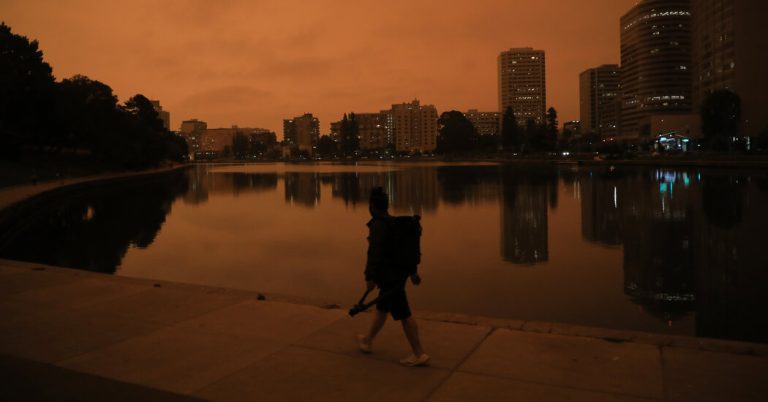Record: Global warming is intensifying both threats.
As humans warm the planet, both heat waves and wildfires are becoming more severe and long-lasting in the American West. This also means they are more likely to overlap. Researchers estimated that two-thirds of California’s land area experienced heat and heavy smoke from wildfires at some point during the state’s record fire year of 2020.
Both risks are harmful to health in their own right: Heat stress increases cardiac strain, and fire smoke inhalation can worsen lung conditions. The new study, led by researchers at the Scripps Institution of Oceanography at the University of California, San Diego, looked at the health effects when the two threats occurred side by side.
On extremely hot and smoky days, staying indoors doesn’t always help, and certainly not for people without air conditioners and air purifiers, said Tarik Benmarhnia, an environmental epidemiologist at Scripps and one of the study’s authors. “Air pollution doesn’t take kindly to being outside,” he said. “It gets inside, interacts with a lot of indoor air pollutants and can lead to a lot of problems.”
the findings: Compound damage, and uneven, too.
The researchers took state data on unscheduled hospitalizations between 2006 and 2019 and combined it with detailed measurements of temperatures and wildfire smoke.
They found that combined exposure to the two risks had a greater effect on hospitalizations than the sum of the effects of each individually. In other words, the health damage from the combined heat and smoke was greater than the sum of its parts.
California’s rural heartland, the Central Valley, and its forested far north experienced more of those hot and smoky days than other regions during the study period, the researchers found.
They also found that the magnitude of the composite effect from heat and smoke differed between communities with different demographics. Areas with weaker socioeconomic indicators and higher percentages of non-white residents fared worse.
What might be next: Common warnings for heat and smoke.
Currently, heat warnings in California are issued by local National Weather Service offices, while hazardous air warnings are issued by local air quality management districts.
The study’s findings suggest that a joint warning about heat and smoke would help keep more people safe, Dr. Benmarhnia said. To account for the added risk on sweltering days, officials may also consider issuing air quality alerts even when pollution hasn’t reached the level that would trigger an alert on cooler days, he said.
A spokeswoman for the California Air Resources Board said the agency is preparing new educational resources this year to help residents protect themselves from heat and smoke.
“These types of joint events are going to happen more and more,” said Dr. Benmarhnia.




